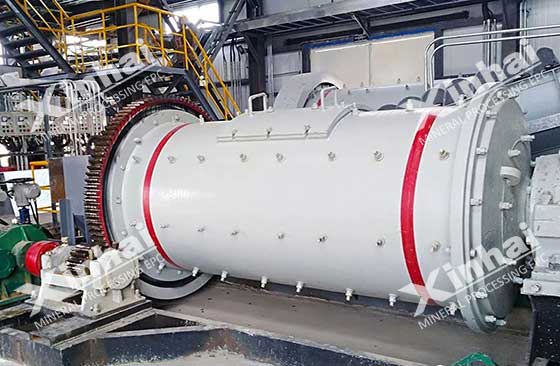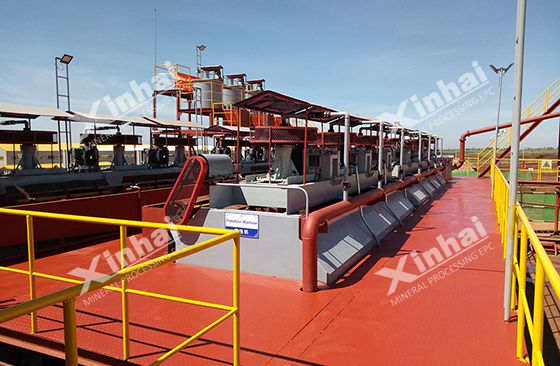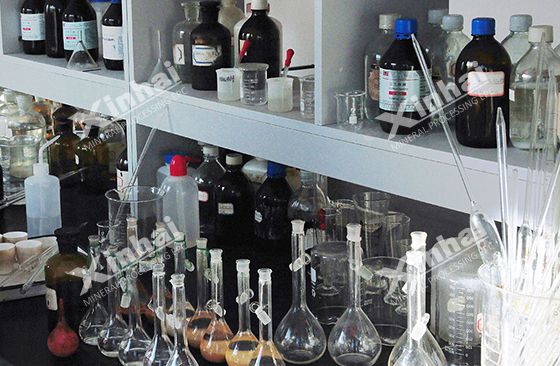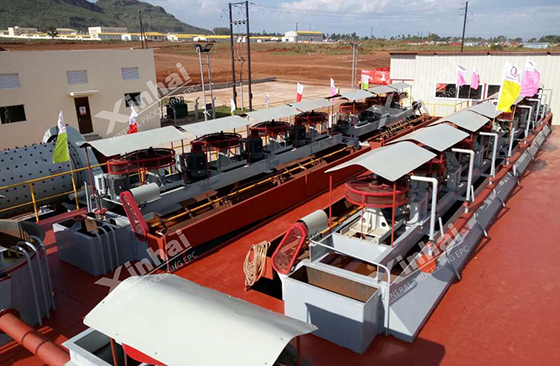
China's potassium feldspar rich resources are few, and often coexist with other impurity minerals, especially a small number of impurities such as iron and titanium, which affect its quality and application, so it needs impurity removal. At present, the main impurity removal methods of potassium feldspar are magnetic separation, flotation separation, acid leaching process and combined process. Specifically, the appropriate impurity removal process should be selected according to the occurrence state of impurity minerals and the embedded particle size.
For weak magnetic minerals such as iron oxide, mica and garnet in potassium feldspar ore, strong magnetic separation should be used for separation, and the choice of magnetic separation equipment needs to be determined according to the property of the ore. Commonly used magnetic separation equipment includes the wet cylinder magnetic separator, the vertical ring pulsating high gradient magnetic separator, the flat magnetic separator.
In actual production, the magnetic separation effect of potassium feldspar ore impurity removal is mainly affected by the magnetic field strength of magnetic separation equipment and the number of magnetic separations.

When the iron-containing impurities in potassium feldspar are pyrite, mica or in the form of iron-containing alkali metal silicate minerals such as garnet, tourmaline and hornblende, the flotation method is mostly used to remove the impurities. The conditions for removing potassium feldspar impurities by flotation are as follows:
1. For sulfide minerals, it uses flotation with xanthate collectors to remove under the natural pH condition of the pulp;
2. For mica minerals, it can be removed in an amine collector system with a slurry pH of 2.5-3.5;
3. For silicate minerals, it can be separated to the surface with sulfonate collectors when the pulp pH is 3-4.
It is worth noting that weakly acidic flotation has a lower dosage of flotation reagents than weakly alkaline flotation. The output of potash feldspar is high, and the flotation effect is better. When grinding, it’s recommended to prevent insufficient kinetic energy of particles by over-grinding, and the bubbles interacting with the ore particles cannot break through the surrounding hydration layer, making the target minerals difficult to separate.

The acid leaching process is a method of removing iron from potassium feldspar by using acids to selectively dissolve the iron-containing minerals. It is an effective method to process potassium feldspar containing very fine embedded crystal structure impurities.
Commonly used acids include hydrofluoric acid, hydrochloric acid, sulfuric acid, nitric acid, oxalic acid, etc. It is important to note that:
1. Inorganic acid has high requirements on equipment and process conditions, and the cost is relatively expensive;
2. The waste liquid must be processed in time after leaching, otherwise, it will have a greater impact on the environment;
3. After the reaction is completed, there is a small amount of impurity ions which may interfere with the performance of the fired product;
4. Organic acids can be removed under calcination conditions without introducing impurity ions, which has a better development prospect than inorganic acids;
5. Oxalic acid has strong acidity, stronger reducibility than other inorganic acids, and has a good complexing ability. It is currently an effective organic acid for dissolving iron oxides which are widely used in removing iron from potassium feldspar, and dissolves hematite slowly, but iron hydroxides such as needle iron ore and fibrous iron ore are easily dissolved, and the iron removal rate can reach 90%.

For some difficult to select potassium feldspar ore, not only the iron content is high, but also some of the impurities penetrate into the cleavage gap of potassium feldspar in the form of iron staining. When a single separation process cannot meet the requirements of the concentrate, it is appropriate to use the combined impurity removal process, such as acid leaching-flotation combined process, flotation-magnetic separation combined process, scrubbing-magnetic separation-flotation combined process, desliming-strong magnetic-acid leaching combined process, etc.
Taking the removal of iron from the combined acid leaching and flotation process as an example, it uses sulfuric acid to remove most of the iron minerals in the ore. The product after acid leaching is used as the raw material for flotation, and sodium oleate is used as a collector for flotation to separate a small amount of iron staining compounds. The whiteness of potassium feldspar is obviously improved, and the iron removal effect is good.

In short, among the above four potassium feldspar impurity mineral removal processes, the magnetic separation removal process is more environmentally friendly, easy to operate, and is one of the important potassium feldspar removal process to remove impurities. For potassium feldspar with non-magnetic impurities, it is advisable to adopt the flotation removal process, and pay attention to choosing a reasonable flotation reagent system and operating parameters at the same time. For the potassium feldspar containing microfine particles or hard-to-select impurities in the form of iron staining, it is appropriate to adopt the acid leaching process or combined impurity removal process.
To find out more about our products and solutions, please fill out the form below and one of our experts will get back to you shortly.